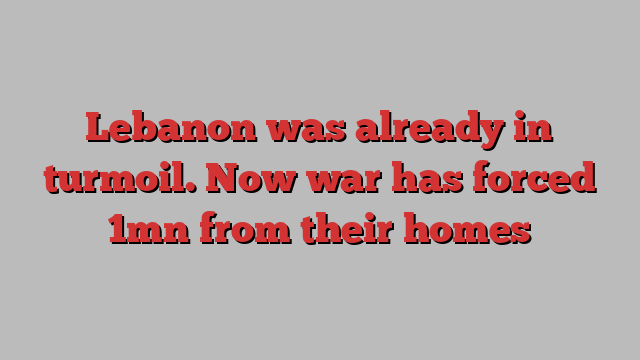
Outside a once-abandoned building in the heart of Beirut, transformed in a matter of days into a packed shelter for 800 displaced people, Zubayda waited to learn whether she would have to spend yet another night sleeping on the pavement.
Zubayda, her careful make-up slightly smeared in the heat, had fled her home in the Lebanese capital’s southern suburbs on Friday night as Israeli bombs rained down around her. Ever since, she had been sleeping, together with relatives, on the street near the sea in affluent downtown Beirut.
Each day, she did the rounds at the shelters in the neighbourhood. But each day she was told all of them were full. “As soon as they began bombing, we fled and came here. We are going through what everyone is going through,” Zubayda said.
Zubayda did not have many options: Beirut is overwhelmed. She is among what authorities estimate to be more than 1mn people displaced in Lebanon by a devastating Israeli bombing campaign over the past two weeks, equivalent to almost one-fifth of the small and fragile nation’s estimated total population of Lebanese, Syrians and Palestinians.
Now, with Israeli troops moving into southern Lebanon for the first time since 2006, the country is bracing for yet greater waves of dislocation and disruption, an unfolding horror with no clear end in sight.
Israel says its strikes have targeted the militant group Hizbollah, which began firing into Israel last year after the October 7 Hamas attack. But the bombardment has wrought destruction across large swaths of southern Beirut, Lebanon’s south and the eastern Bekaa Valley.
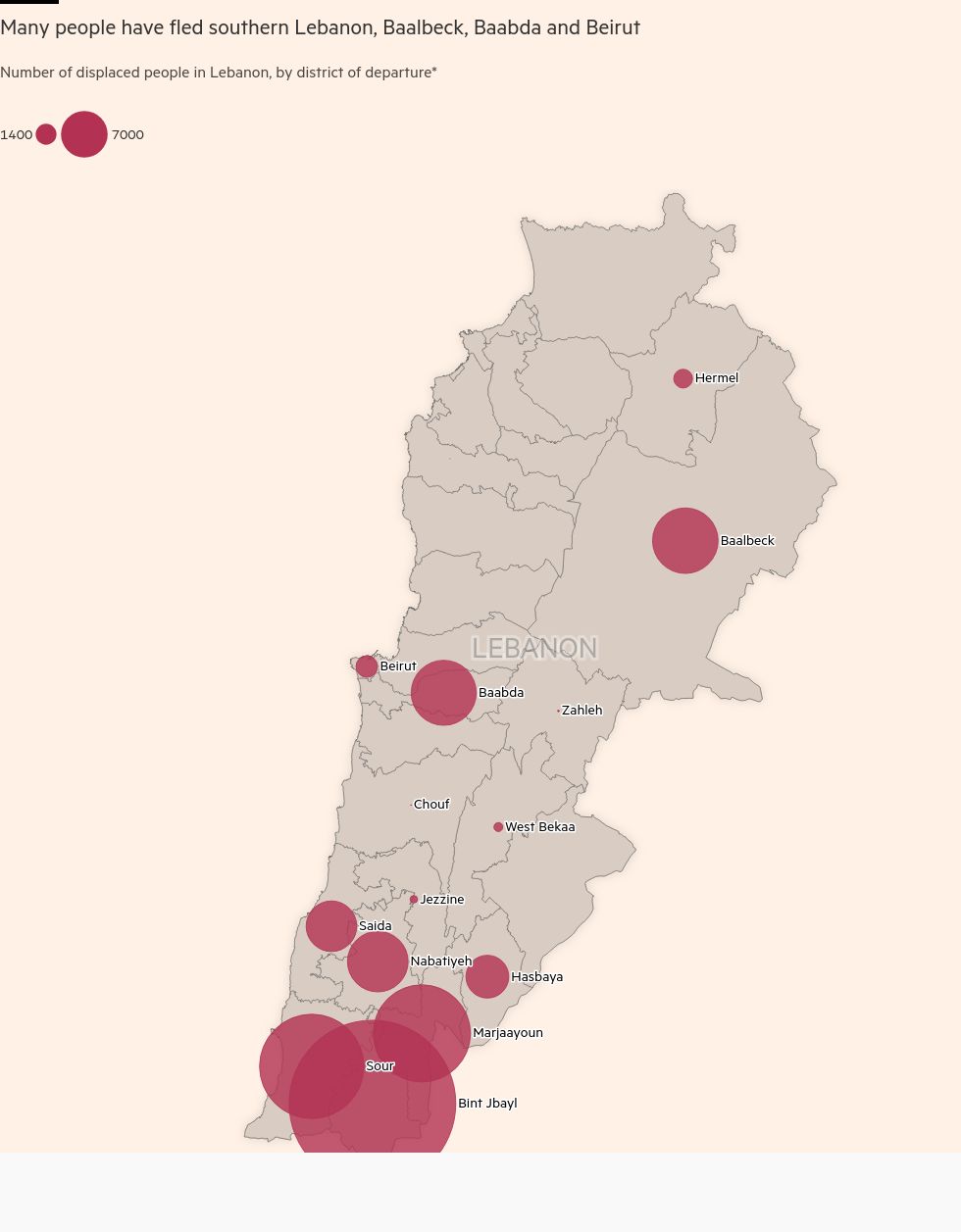
The mass displacement has brought the cost of war to all corners of Lebanon, whose social fabric and institutions were already sagging under the pressure of a five-year economic crisis, the world’s largest refugee population per capita and a dysfunctional state.
“This is now an all-out war on Lebanon,” said Nasser Yassin, the minister coordinating the government’s disaster response. “And I’m not sure how the system will be able to keep coping with increasing numbers of people seeking shelter, on the move.”
Lebanon has faced mass displacement before. Hundreds of thousands migrated internally and abroad during the nation’s 15-year civil war and Israeli invasions in the 1970s and 1980s. About 750,000 people were temporarily dislocated during Lebanon’s month-long war with Israel in 2006.
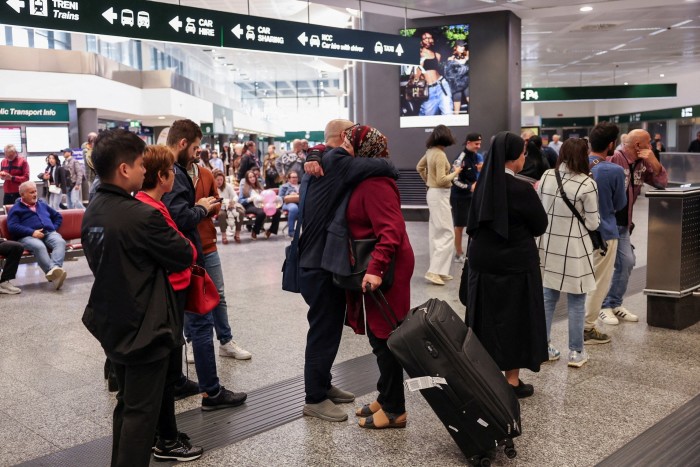
But now Lebanon is tired. The country has lurched from crisis to crisis in recent years. Syrians began fleeing to Lebanon during their country’s civil war; registered refugees now number 1.5mn. And Lebanon is still mired in an economic disaster that began in 2019 and led to the collapse of its currency, impoverishing more than two-thirds of the population. That was followed by a huge explosion in Beirut’s port a year later that killed more than 200 people and destroyed swaths of the capital.
The government is out of funds and in deadlock, led by a caretaker prime minister. Parliament has been unable to agree on a president for almost two years. On Tuesday, the government and the UN launched a $426mn appeal to help civilians affected by the escalating conflict.
Israel’s intense bombardment over the past two weeks has stoked fears among many in Lebanon that its latest campaign could bring the scenes of devastation they had watched unfold in Gaza to their country too.
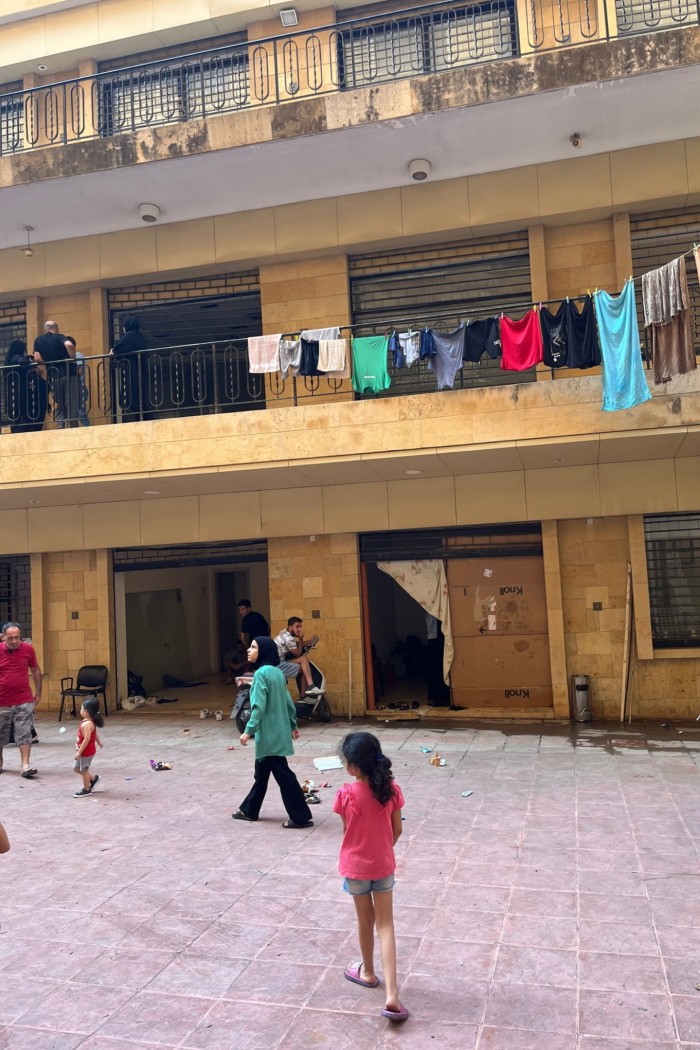
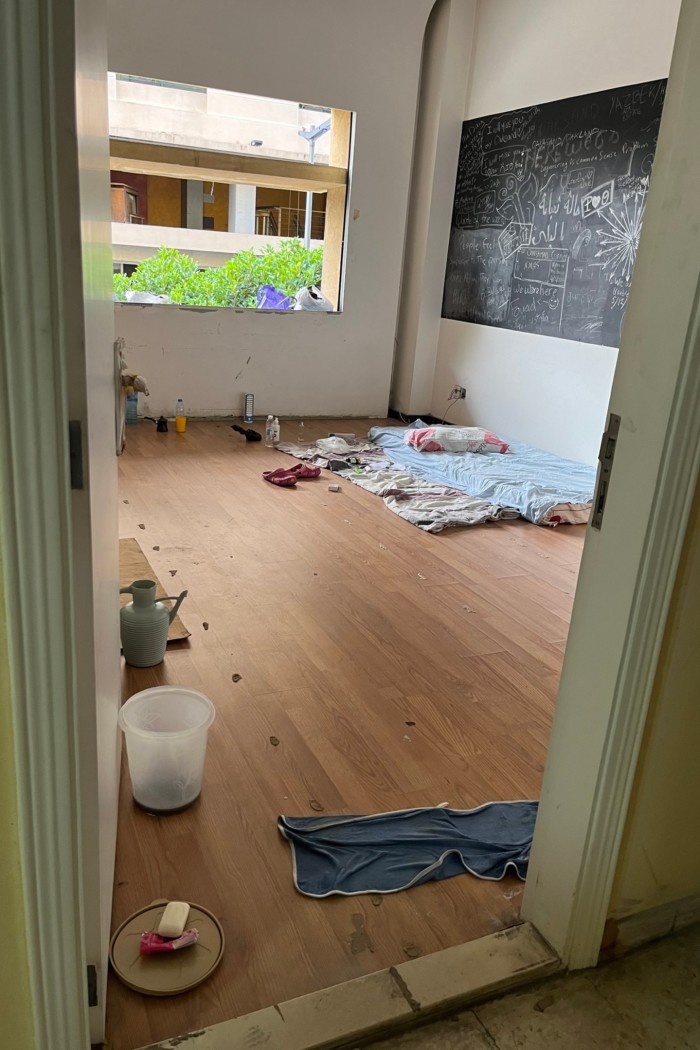
Eleven months of slowly escalating conflict along the southern border had already forced more than 110,000 people to leave their homes in the south, but Israel’s huge bombardment on southern Beirut last week proved to be the “tipping point”, Yassin said.
He estimated that northern Beirut’s population had in effect doubled overnight. “These situations of such large displacement in a very short period of time only happen in major natural disasters,” he said. “So this is, sadly, with the blind eye of the international community, equivalent to a major earthquake happening overnight.”
Some people have been able to stay with relatives or rent rooms in hotels, whose lobbies have suddenly filled with crowds of people unable to go home.
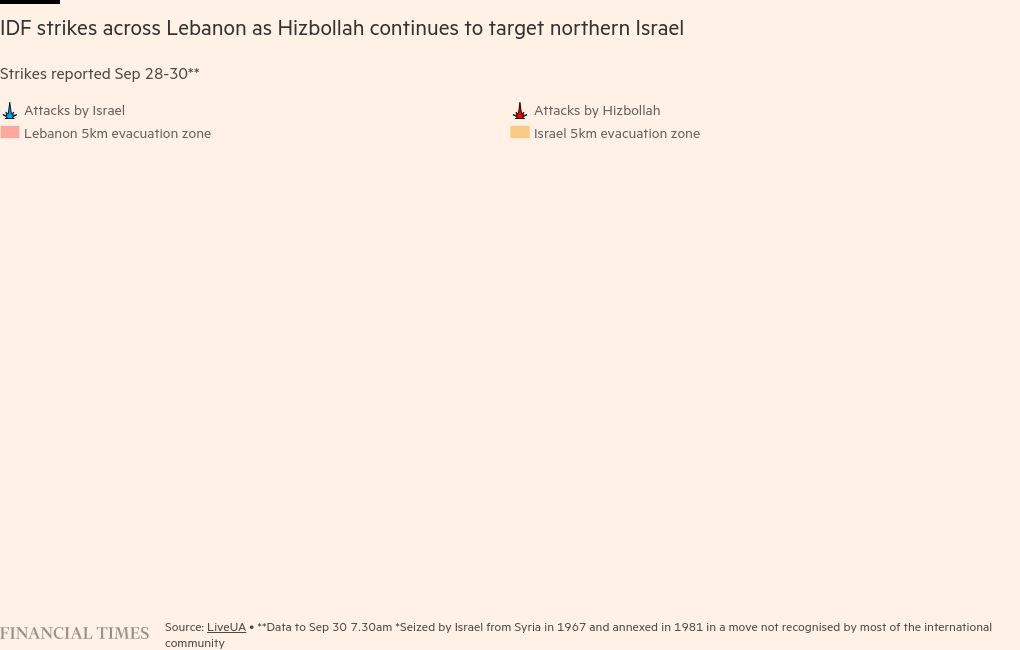
But for many others, that has not been an option. The mass displacement reshaped the city’s urban landscape almost overnight, filling once abandoned and empty buildings with hundreds of people, their laundry hanging from windows. Others were left on the street.
“Where can I go?” said Mahmoud, an elderly man, leaning against a palm tree near the coastal road as cars rushed past. “I’m so tired.”
The state has opened more than 850 official shelters, but the sheer volume of people has meant that volunteers and sectarian political parties — whose vast patronage networks have long filled gaps left by a weak state — have also stepped in, opening their own centres in disused buildings and private schools.
An out-of-use former office complex in one of Beirut’s most luxurious neighbourhoods has been transformed by members of Amal, a powerful Shia political party that is allied with Hizbollah, into an impromptu shelter. Almost 2,000 people sleep on linoleum floors in rooms furnished only with chalkboards.
The giant shelter, just minutes away from the parliamentary headquarters, has received no communication from the state and has hardly any mattresses, one organiser said, forcing people to sleep on cold floor tiles.
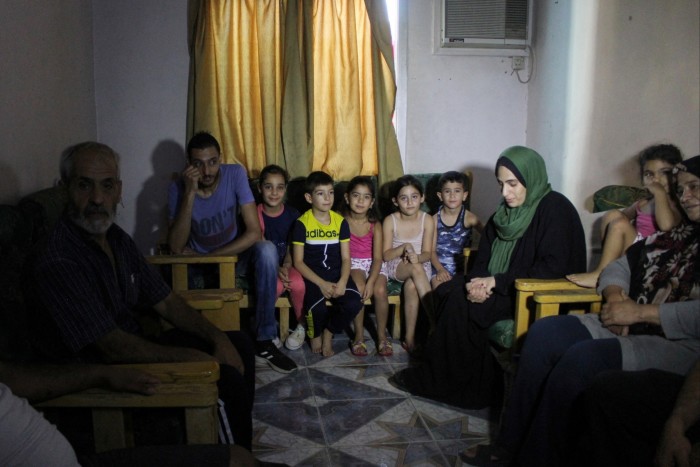
Officials handling the disaster response said they had been caught off guard by the shortage of mattresses. As mattress deliveries were late, they had only around 10,000 mattresses on Monday, when they suddenly needed half a million. Factories across Lebanon, some of which were hit by Israeli air strikes in the past year, are now working overtime to produce them.
“They’ve had months to prepare for this,” said Sami Atallah, a Lebanese policy expert. “It’s not like this war sprang up overnight, and there are not enough mattresses in the shelters, there wasn’t any police or military around to help fleeing [displaced people] from the south — nothing.
“Many are asking: where was the state this week — and every other week?”
Some of the displaced have been left even further on the margins. Afaf Abdelkarim, a divorced mother who fled to southern Lebanon from the civil war in Syria over a decade ago, has again been on the run with her relatives.
Abdelkarim thought she would find refuge in the coastal city of Saida. But all of the shelters she went to turned her away because she was Syrian, in a country increasingly hostile to their presence. She ended up sleeping on the street under the Cola bridge in central Beirut, until a rare Israeli drone strike on an apartment across the street on Sunday night sent her fleeing for her life again.
“We can’t go back to Syria,” she said from the seaside sidewalk where she now sat with her family under a scorching sun. “We’re going to die here.”
Additional reporting by Raya Jalabi in Beirut. Cartography by Jana Tauschinski